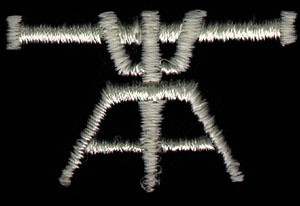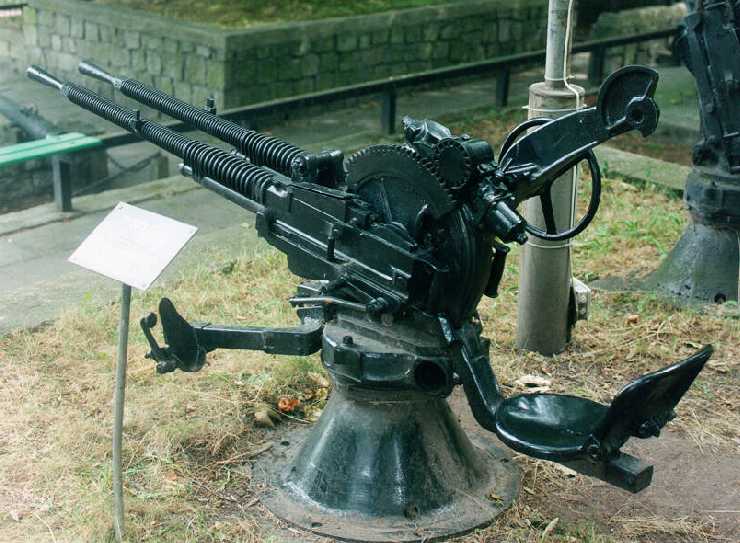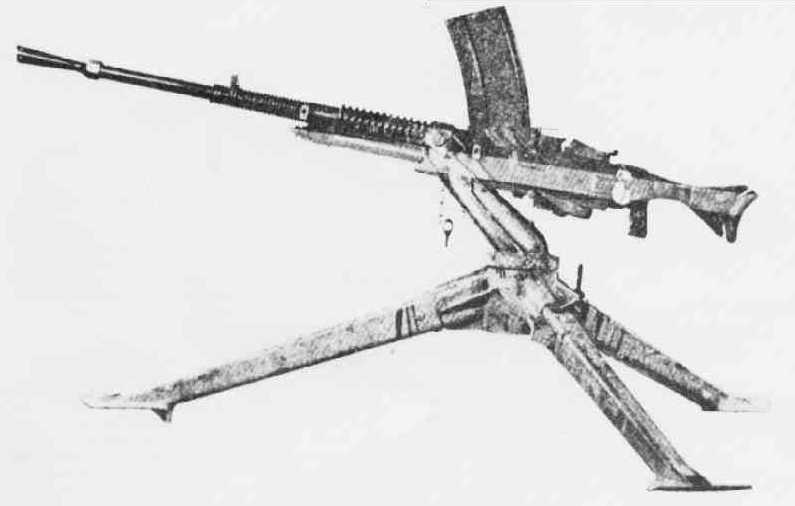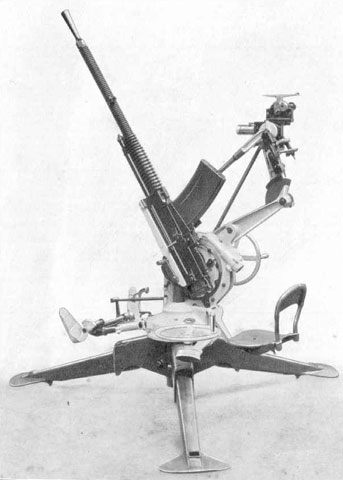

 The Accurate Reloading Forums
The Accurate Reloading Forums  THE ACCURATE RELOADING.COM FORUMS
THE ACCURATE RELOADING.COM FORUMS  Guns, Politics, Gunsmithing & Reloading
Guns, Politics, Gunsmithing & Reloading  Military & Military Surplus
Military & Military Surplus  Quiz
QuizGo  | New  | Find  | Notify  | Tools  | Reply  |  |
| One of Us |
What is this cartridge? The one in the middle is a .50 BMG reloaded with a Match G4 Anthena bullet.  | ||
|
| Moderator |
The 12.7mm the Russians use in the HMG's?? | |||
|
| One of Us |
No. this is the first modern HMG round. | |||
|
| One of Us |
Born in 1918 | |||
|
| One of Us |
Well Browning developed the 50 HMG right after the war, so that has to be it. Joe | |||
|
| One of Us |
There was something before the .50 BMG | |||
|
one of us |
Looks like the 5V/580 Vickers (12.7x81 case) but can't be sure from photo. IF that is what the round is then I think you are wrong as the German 13 mm Mauser M1918 for the "Tank und Flieger" (sp?) heavy machine gun was ahead of both the Browning and the Vickers. Enlighten us! Lord, give me patience 'cuz if you give me strength I'll need bail money!! 'TrapperP' | |||
|
| One of Us |
Is it 13.2 mm Rifle Anti-Tank (Mauser)? Joe | |||
|
one of us |
.55 Boyes? "A cheerful heart is good medicine." | |||
|
| One of Us |
13 x 99 mm Hotchkiss. | |||
|
| One of Us |
Launched as the war was ending to replace the old 11mm Gras that reentered service in 1916 because only a 11 mm round was big enough to be modified to contain pyrotechnic components. A british Vickers had been modified to fire these 11mm Gras as anti balloon and anti aircraft HMG. When the tanks appeared there was nothing between 8mm calibers and ( for the French ) 37mm. Germany created the 13 mm tankgewehr, France worked on LMGs. The french Hotchkiss 13 aka 13.2 will equip most of the warships until 1945 except those using the .50 BMG of course.       | |||
|
one of us |
Cool! "A cheerful heart is good medicine." | |||
|
| One of Us |
.50 BMG will be used only by US until 1941, even the Browning HMG sold under license by FN will be modified to 13.2 mm. The french round is produced already in huge quantities by SFM in 1921/1922 as I could see from technical drawings I could look at. Manurhin starts production in 1930 and becomes the main supplier for french armed forces in 1933 when SFM is more active on export orders. The 13.2 is available already in Armour Piercing High Explosive Incendiary since the beginning with a HE charge of 3.5g able to destroy an aluminiuum structure wing. the fuze is so sensive that it can be used on fabric wings and a 0.1 mm paper makes it detonate on impact. a self destruction fuze exists. All these technical capabilities won't exist for decades with the .50 BMG. the french round will be adopted and used by Germany, Sweden, Romania, France, Japan, Italy, China, and a few others. Great Britain will adopt it in 1939 but will switch to .50 BMG supplied by US. The Hotchkiss HMG will be adopted as is or slightly modified by most of the navies before WW2. Japan will copy the aviation version of the Browning HMG in 1943 retaining the use of 13.2 round. | |||
|
One of Us |
didn't the Japanese also have A 12.7mm (or in that size range) Hotchkiss design AA HMG on their ships? "Bitte, trinks du nicht das Wasser. Dahin haben die Kuhen gesheissen." | |||
|
| One of Us |
Exactly, actual bore diameter was 13.2 mm (0.52"). http://www.navweaps.com/Weapons/WNJAP_13mm-76_mg.htm  | |||
|
| One of Us |
Edmond was that bore or groove diameter? Joe | |||
|
| One of Us |
Let's clarify, French had a strange way ( Swiss, too) to give caliber denominations. 7.5 x 54 is a 7.5 mm on top of the groove, the bore is in fact 7.83 mm exactly like the Swiss 7.5 or the US .30 The 13.2 mm has a bullet diameter of 13.47 mm, if I remember correctly the bore was 13.40 or 13.42 mm. I can't find the diagrams I had for the 13.2. The 13.2 was the smallest caliber that could enclose pyrotechnic devices , explosives with time fuse and its armour piercing capability was par with the german 37 mm PAK up to 500 meters. | |||
|
| One of Us |
Edmond, The Americans do it like this. Let's take the Winchester 308. They drill a hole through a barrel blank and ream/hone it smooth. That's the bore. In the 308's case that is .300. They they rifle it. Depends what rifling method they use, but when it was cut rifling for an example the grooves they cut into the bore would be about .004 across. Thus measuring groove bottom to groove bottom was .308. What you call the top of the groove (which is left of the bore after rifling, we call the land. When we call the Nato round 7.62x51 I undersant that to be the bore (or lands or tops of the grooves) and it's .300 in inches. So wouldn't 7.83mm and 7.5mm be .30826 and .29527 iches for the French and Swiss round? Here in the U.S.we've always been told that the 7.5 Swiss is actually a tight 30 caliber and beware using .308 and .309 bullets not to over pressure it for obvious reason. If the French 7.83 is actually the bore diameter (remember you said top of grooves, we say lands, or the original bored hole before rifling) wouldn't a .308 inch diameter bullet actually be a sloppy fit? It wouldn't seal the grooves unless it upset enough into them and that usually not likely with jacketed bullets. Not arguing, just trying to clarify and understand the differences between metric and American measurements in calibers and bores. Joe | |||
|
| One of Us |
You're totally right, I did not use groove and land the proper way.(note to self, never post datas when it is midnight after a busy day) I shot Hornady 150 gr FMJ BT in both my Swiss K 31, my French MAS, my French PGM and my US rifles. That's the one I found to behave perfectly in all of them due to its weight as needed by the various barrel twists, despite the fact the Swiss originally used around 170 grains( depending on 1896/11, K 11, K 31 or Stg 57), the French used 139 and147 grains, the others in between. The swiss barrel are slightly tight like the Hammerli 1942 barrelled K 31 I often use, the French have a higher land or deeper rifling than usual. I have made some test in 2003 with the Romanian Dragunov posted elsewhere and other 7.62 Russian rifles of Soviet and Finnish manufacture. This was necessary for me to get the CIP agreement as an ammunition manufacture ( I am 195/2003 DCB for a 7.62x51 and a 7.62 x 54R loads). I have shot 72 combinations of powders, primers and bullets. I could have access to a test tunnel for speed and the lab equipment (piezo) to measure pressure and could compare with accuracy results. I shot both .308, .309, .311 and .312 bullets. I found out that using .308 in a brand new soviet block rifle produced the same groups than with .311. Second discovery was using .311 in .308 barrels, higher speed, same accuracy, no overpressure. Only with almost worn out barrels, I had erratic results when mixing diameters. I finally got my CIP agreement and at the same time could adress the technical requirement of the customer by loading the NATO round with a 155 grains Palma Match Sierra and the russian round with a .311 174 grains MatchKing Sierra | |||
|
one of us |
Interesting test results, Edmond! Confirms what I'd expected, though. Running oversized bullets, cast or jacketed, through sizing dies to swage them down several thousandths of an inch really doesn't take much force compared to the pressure in the chamber on firing. As for undersized bullets, that causes a lot of problems with lead bullets because hot gas leaking around between the bullet and bore surface acts like a torch and washes away molten lead from the surface of the bullet to spray on the bore surface. But that doesn't happen with jacketed bullets, and since the lands still occupy a lot of the circumference of the bore (around 25-50% typically), they're quite capable of maintaining good bullet alignment if it starts into the throat straight. (Trains generally stay on course quite nicely with only two rails to guide them!) The small amount of leaking gas won't likely reduce velocity much, and reduced friction may compensate for a lot of that. Many military rifles from the early German Gewehr 88s on to Lee-Enfields, Soviet Mosin-Nagants, etc. have been found with groove dimensions substantially larger than their specified bullet diameters. (For example, the arsenal refurbished WWII era Mosin Nagants now flooding the U.S. market typically have bore diameters around .303" and grooves from .314-.316".) Many shooters think that's evidence of either "shoddy" wartime production expediency or of excessive bore wear.I don't believe either is the case. It's far too common and uniform, and had to be done deliberately. I believe there are several advantages to oversized grooves with jacketed bullet ammo for military use: Better tolerance for dirt, rust, powder & primer fouling, "frozen" cold sticky bore oil, etc. Less pressure variation with variations of bullet diameter, jacket thickness and hardness, core materials, etc. Probably (my hypothesis) it changes less with wear than a close fitting bore/bullet combination, until the lands wear so badly in the throat that they don't adequately support the bullet to keep it from tipping. Leaking gas between the bullet and bore may have a cleaning effect on built-up fouling and dirt in the bore, just as it can erode the surface of a lead bullet. With button rifling, if the buttons are made oversized to start with, they could be used longer before they wear out to the point that bore and groove dimensions are too small. Just depends on how much bore variation's acceptable in a wartime situation. Even if the accuracy isn't quite as good as with a "proper" fit, acceptable accuracy standards for a battle rifle are considerably less stringent than for benchrest competition. For military use, reliability and safety with any ammo under extreme conditions are the principal concerns. "A cheerful heart is good medicine." | |||
|
| Powered by Social Strata |
| Please Wait. Your request is being processed... |
|

Visit our on-line store for AR Memorabilia

